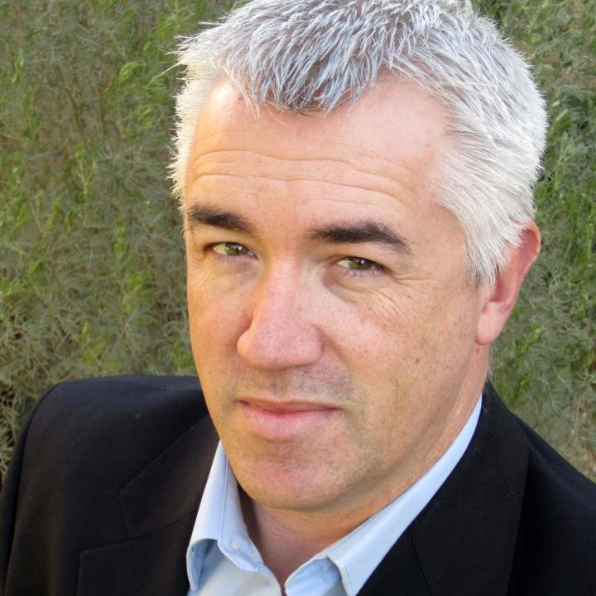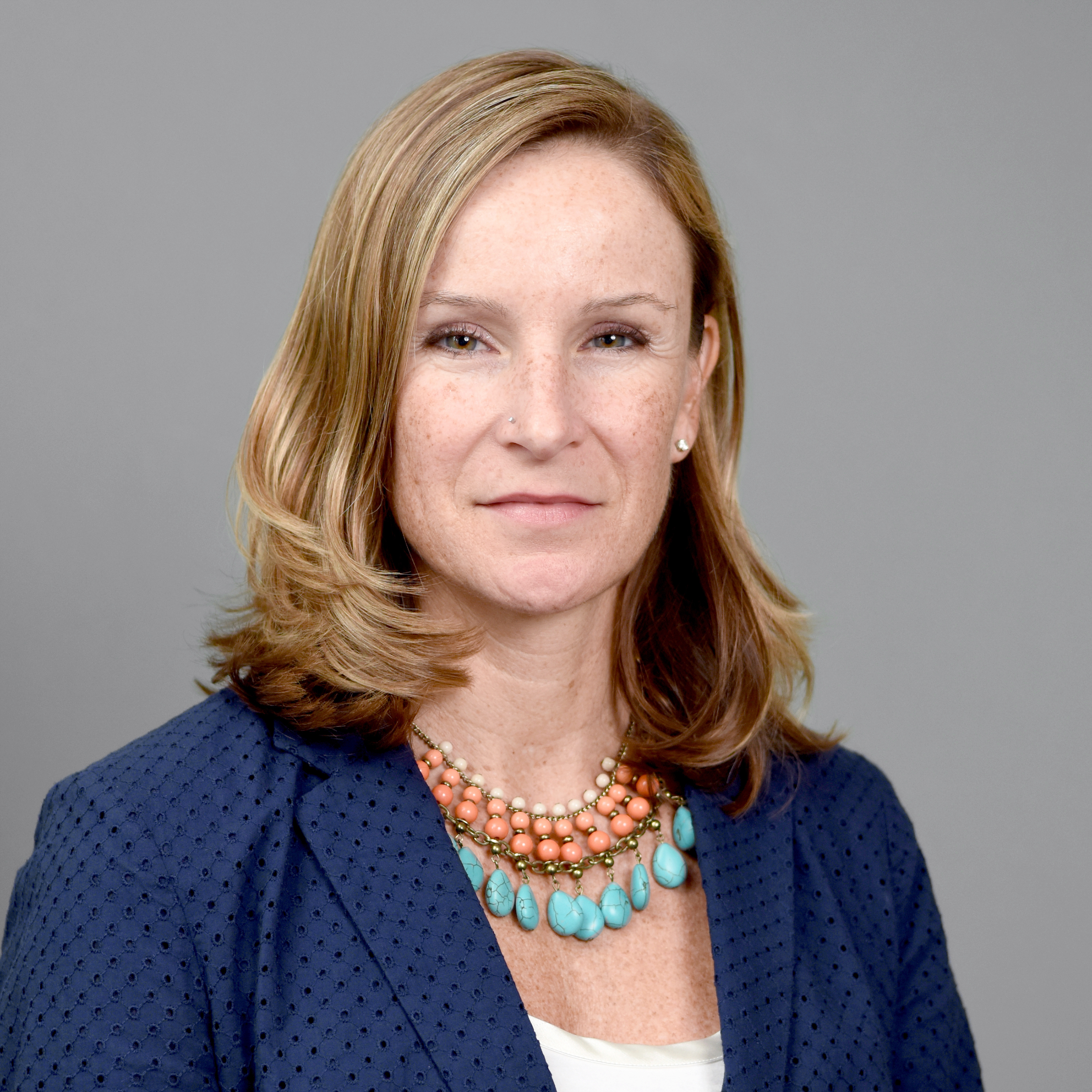Humans need interaction, but the COVID-19 pandemic is asking people to step away from each other at a crucial time. And that’s contributing to widespread grief, depression and anxiety, according to two Arizona State University professors.
James Bludworth and Jennifer Pereira, two educators with Counseling and Counseling Psychology in the College of Integrative Sciences and Arts, said the COVID-19 pandemic is separating people from loved ones and causing drastic changes in work, community and lifestyle. They say that can be a potential risk for people who struggle with chronic suicidality, high levels of stress and those feeling overwhelmed.
Additionally, Americans are turning to alternate behaviors as coping mechanisms. Alcohol and marijuana sales are soaring; gaming and TV bingeing are also increasing, and some people are eating more and exercising less. People who are at risk for suicide or have mental health issues are finding it even harder to cope.
Bludworth, a licensed psychologist, and Pereira, a licensed mental health counselor, spoke to ASU Now about recognizing distress in loved ones, effective interventions and mobilizing support until this crisis passes.
Editor's note: Some responses have been edited for clarity and format.
James Bludworth
Question: How is COVID-19 affecting people who are at risk for suicide or who have mental health issues?
James Bludworth: At some point in all of our lives we will be faced with an event or events that cause us distress or pain. However, the magnitude and pervasive nature of this global crisis presents challenges the likes of which most people have never experienced. One of the difficulties we must endure is the necessity for physical separation. Although this is inconvenient and stressful for most of us, it represents a potent risk factor for people who struggle with chronic suicidality or other mental health struggles.
When working with a person who is experiencing suicidal thoughts or is in a crisis state, often one of the most effective interventions is to mobilize the person’s social support system. When we connect people who are struggling with such issues directly to supportive friends and family, we find that this serves as a sort of holding environment to keep the person safe until other interventions can be applied and the crisis passes. Our current situation has, in many ways, removed one of the most effective weapons we have in our arsenal against suicide. Mental health professionals must now be more creative and innovative in mobilizing social support than ever before.
Q: In addition to the physical aspects of separating from the people you love, what are the experiences people are having now, and what role does this play in their ability to manage their current issues?
Jennifer Pereira: Many people are experiencing heightened anxiety due to the number of unknowns inherent in this situation. I think that, concurrently, people are also dealing with more depression and anxiety due to the separation from loved ones and the drastic changes in work, community and lifestyle. An additional reaction that many people I have spoken with seem to be having is that of grief and loss. The loss of and change in health, relationships, financial status and work life, along with what we call secondary losses — i.e., sense of control, routine, sense of safety, predictability, etc. — have been increasing exponentially for people. These complex emotions can easily overwhelm a person’s ability to cope with their typical everyday stressors, drastically reducing their ability to then manage these new concerns.
Q: What are the recommendations for coping with these new experiences and the deeper levels of crisis?
Bludworth: I often look to the distress tolerance skills taught in dialectal behavior therapy (DBT) as an excellent starting place for people who are experiencing distress — regardless of the source of distress. This is a well-researched set of interventions developed by Marsha Linehan and her colleagues that have demonstrated as effective across a wide range of stressful and distressing circumstances. There are three primary skills to learn in within this model:
1. Accepting the present situation for what it is and what it is not.
2. Distracting oneself from self-destructive behaviors.
3. Self-soothing.
The specifics of these interventions are beyond the scope of this forum. One need only Google “DBT distress tolerance skills” to find a wide range of practical resources.
Counseling is another important coping strategy. Even though many of us consider face-to-face intervention to be the gold standard of counseling practice, there is much to be said for the accessibility and effectiveness of tele-mental-health services. If you have tried to apply the DBT distress tolerance skills without the desired result, I recommend contacting one of the local mental health agencies here in the greater Phoenix metropolitan area. Many of these agencies have quickly transitioned to tele-mental-health services as the primary mode of service delivery during the pandemic. A qualified counselor or psychologist can collaborate with you to identify your challenges and develop a plan to address coping with this extraordinary situation.
Jennifer Pereira
Q: Given that this is a crisis we’ve never dealt with before, how do people recognize the signs of grief, depression and anxiety they’re experiencing and what are some ways they can manage those?
Pereira: Good question. First and foremost, I would remind people that all of these reactions are normal and can actually be helpful. Anxiety, depression and grief seem to get rolled into a ball of emotion that people, most often, push away or try to “power through.” These emotions, however — grief in particular — can create a space for people to slow down, reflect, reassess and adapt to their changing circumstances. It is important to acknowledge when you are feeling high levels of stress, experiencing a change in productivity and motivation, feeling disconnected and feeling overwhelmed — and maybe simultaneously underwhelmed due to quarantine restrictions. Acknowledge these pieces while also being gentle with yourself about them; not judging yourself harshly or as lacking in some way. I would hope that people are able to recognize that these are all normal reactions to an incredibly stressful and concerning event.
In dealing with their reactions, it’s helpful for people to:
• Give some thought to what normally works to calm and center yourself.
• Work to control what you can actually control, and be realistic about the things you can’t.
• Stay as present as possible in the current moment. Don't let yourself spin out into the unknown of the coming weeks and months.
• Be gentle with yourself and recognize that you may not be feeling productive, motivated, energized, well-rested at this time – and that’s OK.
• Find creative ways to connect consistently with others.
• Take time to reconnect with yourself – finding humor; engaging in mindfulness, meditation and exercise; attending to diet, etc.
Q: How do you foresee people moving forward in their lives once this crisis has passed?
Bludworth: Post-traumatic stress is a concept and a diagnostic category that is commonly referred to relative to crisis situations such as the one we are now facing. Post-traumatic growth, on the other hand, is less commonly mentioned in the media and in our culture generally. This theory was developed by psychologists Richard Tedeschi and Lawrence Calhoun and posits that those who weather psychological strife during times of real adversity can realize positive growth afterward. What makes this concept distinct is that usually the person who experiences post-traumatic growth was quite distressed and confused during the time of crisis. Once they are safe, they begin to go through a transformative process wherein they make new meaning of their experience.
According to Tedeschi and Calhoun, they begin to experience a kind of transformation in five key areas of living:
1. Appreciation of life.
2. Relationships with others.
3. New possibilities.
4. Personal strength.
5. Spiritual change.
I think post-traumatic growth is a possible outcome for many of us. That being said, I think many of us will need extra support after the dust has cleared. My sincere hope is that we will have more compassion for each other after surviving this calamity together.
Q: You’ve seen and dealt with a lot of crisis in your career, what is it that you’ve learned from this new crisis and how will you use it in your future work?
Pereira: That’s a big question, and it’s an important one. During this crisis, I’ve learned that things I previously thought were essential no longer seem so important. I have relearned the importance of deepening relationships and the value of connection. I have learned that we are better as a collective than as individuals, and I have been reminded that there is immense strength in acts of caring and kindness. One additional piece that continues to come up for me is the idea that we can be both resilient and fragile — and accepting of both!
In my future work I hope to continue helping people see the importance of accepting both their moments of resilience and their moments of fragility. As a clinician during this crisis, I often have to dig deep and be present and available for the people who depend on me — being the voice of calm in a chaotic new normal isn’t easy, but it’s necessary.
In going forward I believe one way to look at this crisis is to see the opportunities it has provided for understanding that we can actually slow down, take time to be healthy, connect with others in more meaningful ways, and reevaluate the parts of our lives that we felt were so important before this crisis came along.
Top photo illustration courtesy of Pixabay
More Science and technology

CSI: Mars
By Wendee NicoleTravelling to Mars has loomed large in the public’s imagination since at least the late 1800s when H.G. Wells' “War of the Worlds” tale of a Martian invasion was serialized in print.…

ASU research is helping solve crimes
On TV, detectives solve crimes in 43 minutes (plus commercial breaks). In real life, it takes much more time — and many more minds, including researchers discovering new ways to analyze evidence and…

Compact X-ray laser lab aims to reveal deep secrets of life, matter and energy
X-rays allow us to view inside the human body to diagnose broken bones and other hidden problems. More recent X-ray advances are making it possible to see events at the scale of atoms and molecules,…




